The firsts of the First World War: A visual history
World War I was one of the deadliest wars in history. But it also produced a plethora of innovations in science and society.
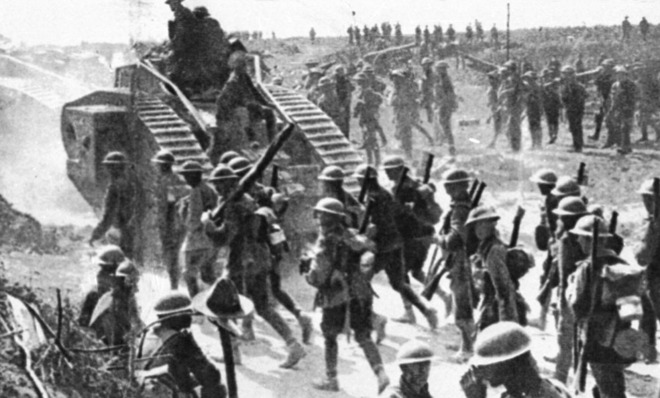
One hundred years ago today, World War I began.
By the time it was over, 10 million soldiers were dead, along with another six million civilians. Europe was bankrupt, setting the stage for World War II, which kicked off a mere 20 years later.
But the Great War also prompted innovation on a scale rarely seen before. Some of the inventions of that era — tanks, for instance — were not peaceful in purpose. But the war also saw the introduction of blood banks, mobile X-rays, and the inclusion of women in the military.
The Week
Escape your echo chamber. Get the facts behind the news, plus analysis from multiple perspectives.

Sign up for The Week's Free Newsletters
From our morning news briefing to a weekly Good News Newsletter, get the best of The Week delivered directly to your inbox.
From our morning news briefing to a weekly Good News Newsletter, get the best of The Week delivered directly to your inbox.
Below, a visual history of the First World War's firsts:
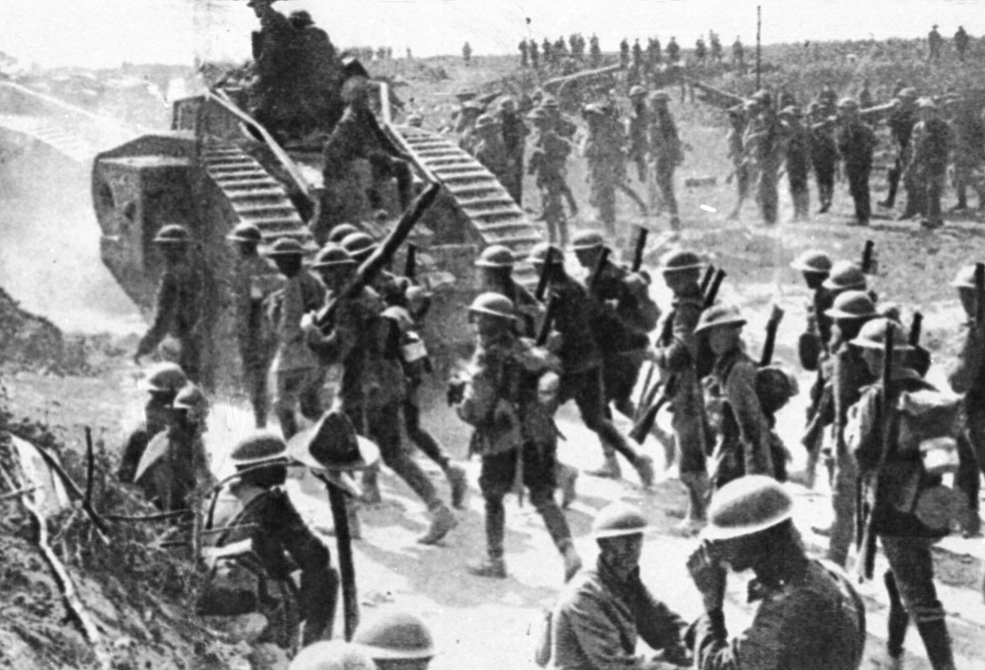
Tanks | Nov. 20, 1917: Soldiers follow a British Mark IV tank during the Battle of Cambrai. Britain led the way in developing the tank, which debuted in combat in 1916. The vehicle was meant to break trench-warfare stalemates. | (REUTERS/Handout/Files)

Observation balloons | c. Dec. 9, 1917: An American observation balloon awaits liftoff. Observation balloons were transformed during WWI for military use, such as intelligence-gathering and artillery-spotting. The balloons were generally accompanied by anti-aircraft guns and fighter aircraft for protection. | (REUTERS/Handout via U.S. Library of Congress)
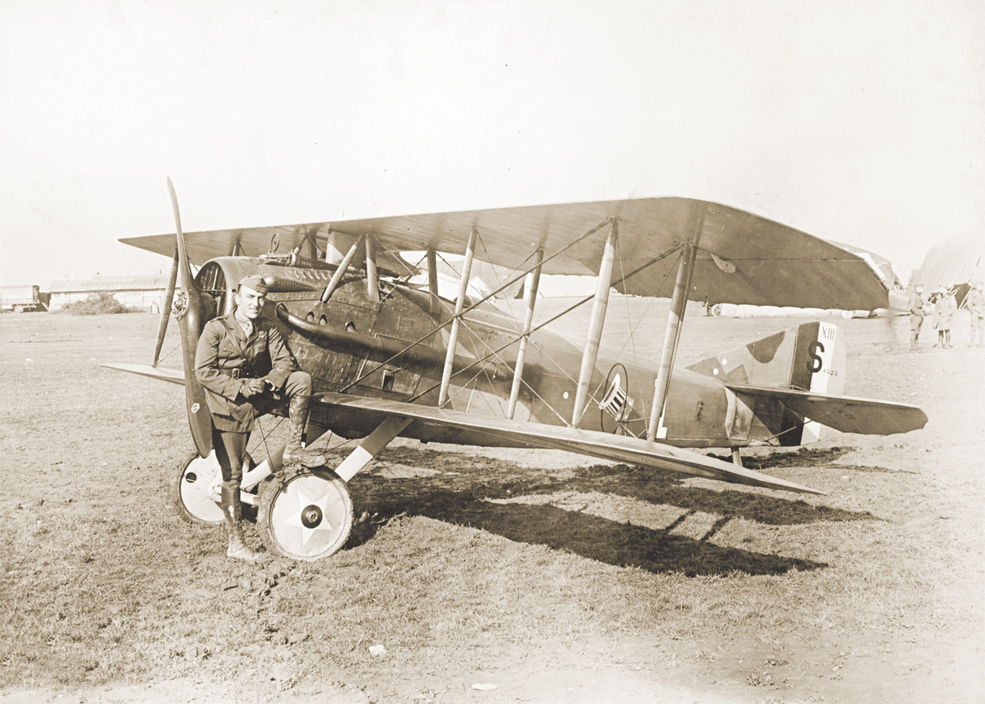
Air combat | undated: America's most successful WWI fighter ace, 1st Lt. Eddie Rickenbacker, stands next to a biplane. WWI gave birth to the fighter pilot. Aircrafts were deployed en masse for the first time, both in air-to-air combat and reconnaissance missions. | (REUTERS/Handout via U.S. National Archives)
A free daily email with the biggest news stories of the day – and the best features from TheWeek.com

Helmets | September 14, 1918: U.S. soldiers await German patrols near Hazavant, France. Before the broad issuing of steel helmets during WWI, most soldiers wore cloth caps. But large number of head wounds suffered during WWI made it evident that modern soldiers required wearable protection — and quick. Shortly after the U.S. entered the war in 1917, the government turned to Dr. Bashford Dean, curator of arms and armor at the Metropolitan Museum of Art, for help. | (REUTERS/Handout via U.S. National Archives)
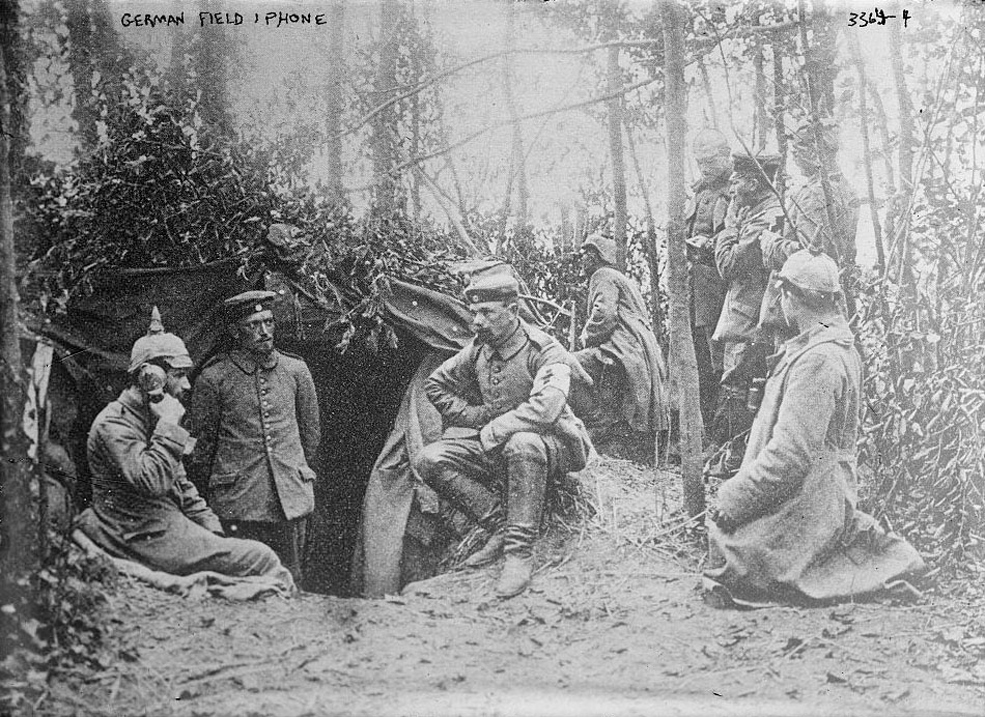
Wireless communication | undated: German soldiers in a dugout file a report via field telephone. Wireless communications began to be used regularly to coordinate military movements. | (REUTERS/Handout via U.S. Library of Congress)
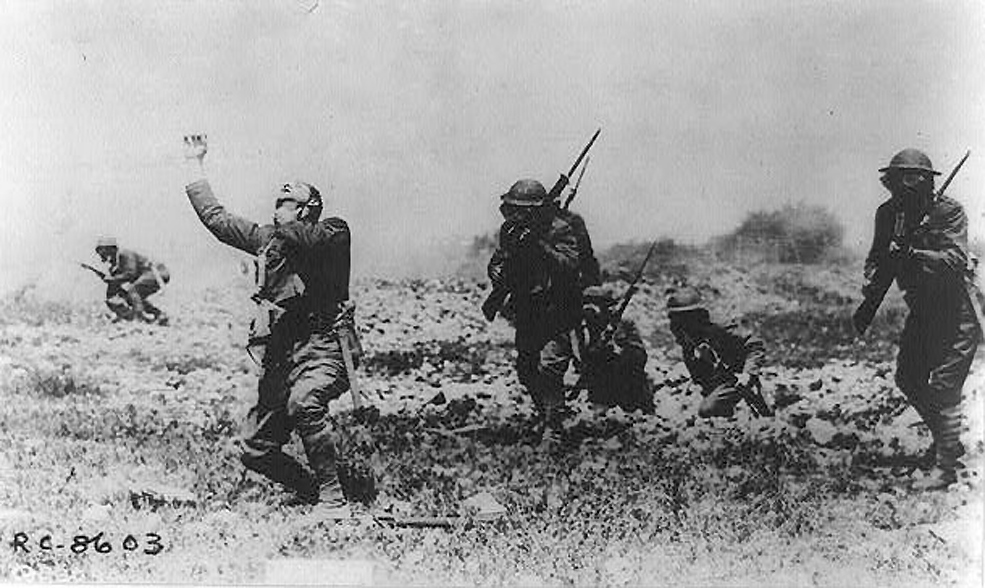
Poison gas | undated: Six U.S. soldiers, with five of them wearing gas masks and the sixth holding his throat, appear in a photo probably used for training purposes. Chemical weapons in the form of deadly poison gases were used for the first time in the Great War, now cited by some historians as the "Chemist's War." | (REUTERS/Handout via U.S. Library of Congress)
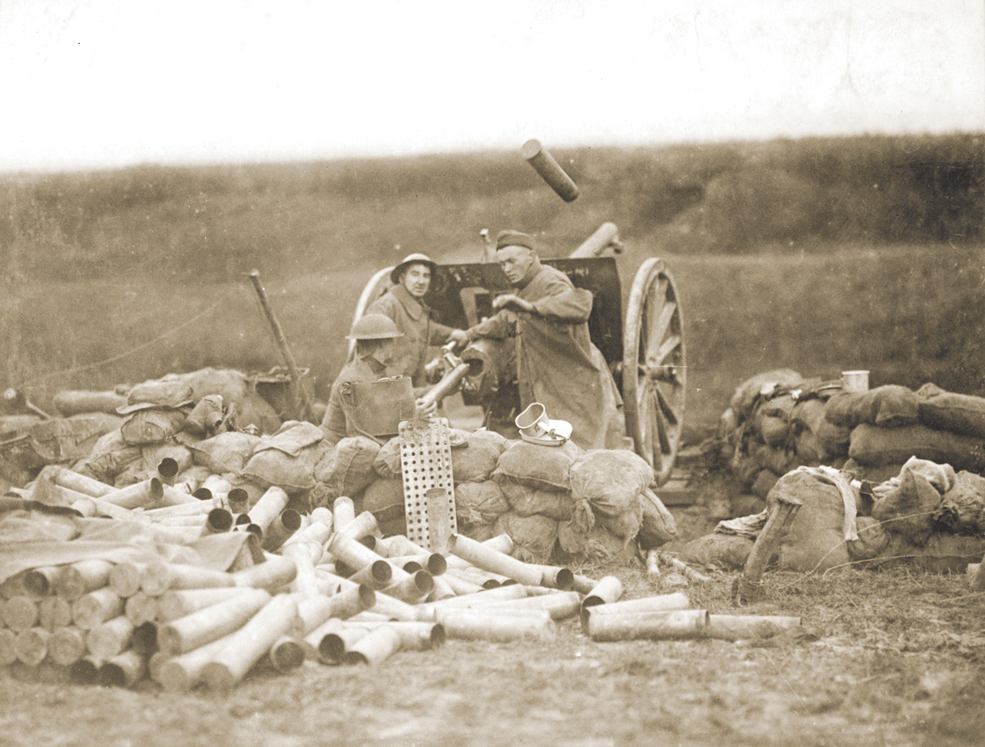
Artillery | Sept. 12, 1918: U.S. artillerymen fire a 75mm gun toward Montsec from a position near Beaumont, France. Machine guns were regularly employed for the first time during WWI, forever altering the battlefield. | (REUTERS/Handout via U.S. National Archives)

Blood banks and X-rays | undated: A U.S. Army nurse assists a patient. Blood banks were created to help stabilize the hundreds of thousands of wounded soldiers. Mobile X-rays were also developed during this time, to aid doctors performing battlefield surgeries. | (REUTERS/Handout via U.S. Army Nurse Corps)
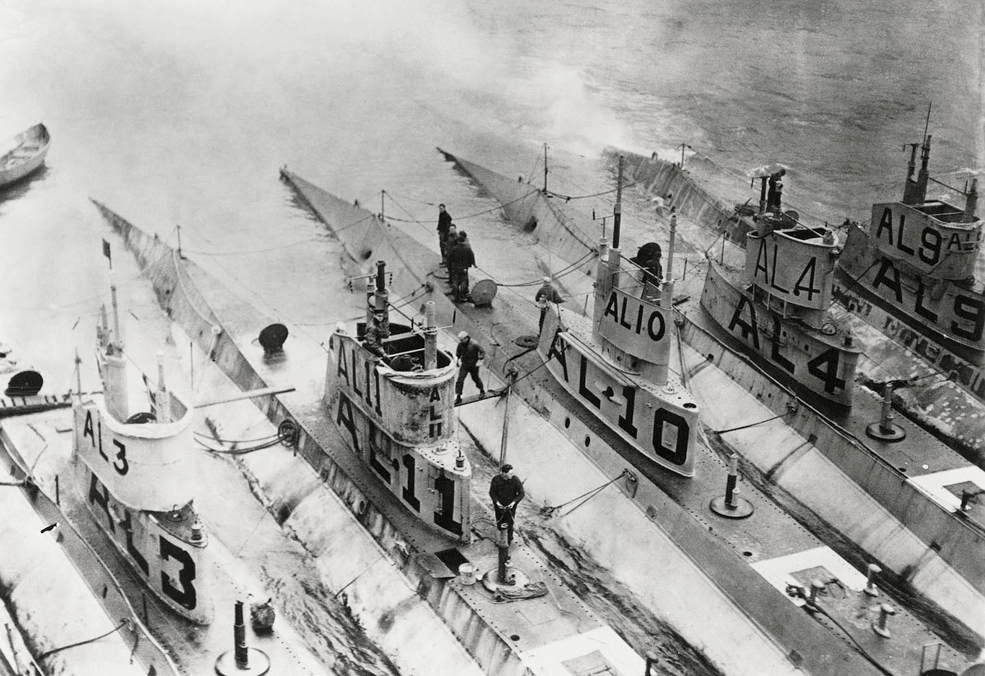
Underwater offense | undated: L-boat submarines stationed in the Azores. Submarines became a key component in naval strategy. | (REUTERS/Handout via U.S. Navy)
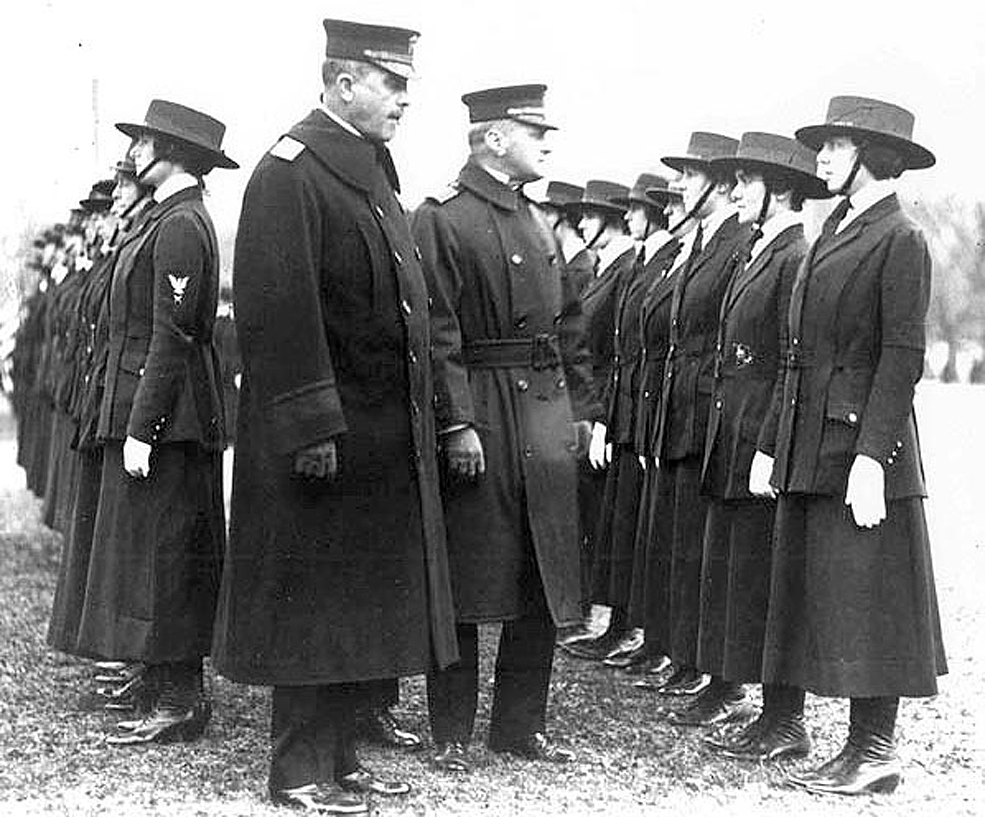
Women at war | 1918: Rear Adm. Victor Blue (left center), chief of the Bureau of Navigation, inspects female yeomen on the grounds of the Washington Monument. The first officially enlisted women appeared in the U.S. military when the Navy created a reserve force, which allowed women to work as yeomen, radio operators, nurses, and in other support roles. | (REUTERS/Handout via U.S. National Archives)
Lauren Hansen produces The Week’s podcasts and videos and edits the photo blog, Captured. She also manages the production of the magazine's iPad app. A graduate of Kenyon College and Northwestern University, she previously worked at the BBC and Frontline. She knows a thing or two about pretty pictures and cute puppies, both of which she tweets about @mylaurenhansen.





